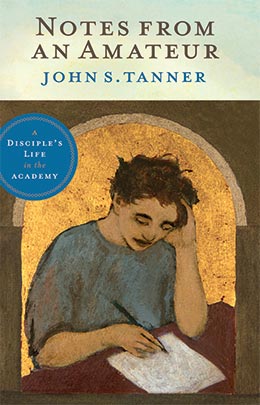Tolerance and Testimony
John S. Tanner, Notes from an Ameteur: A Disciple’s Life in the Academy (Provo, UT: Religious Studies Center; Salt Lake City: Deseret Book, 2011), 65–7.
Christian Smith was on campus recently to talk about his book Soul Searching: The Religious and Spiritual Lives of American Teenagers. As he spoke of the difficulty teens have embracing and expressing their faith in a society that places a premium on religious toleration, I reflected on the challenge of integrating the competing claims of tolerance and testimony.
Smith notes that American teenagers find it very hard to talk about their religious beliefs (though Latter-day Saint teens less so than others). There are many reasons for this. One is that teens learn early “to be civil, inclusive, and non-offensive when it comes to discussing the subject of religion.” They learn that it’s uncool to be “judgmental” or too religious, and they are discouraged from bringing religious values into the classroom by their teachers, who “avoid discussing religion like the plague.” Consequently, even highly religious youth in America find it much more difficult to articulate their religious values than their moral views on such matters as drunk driving, racial discrimination, and sexually transmitted diseases. In the postscript to his book, Smith urges religious educators to help youth learn how to appropriately speak the language of faith in the public sphere. He asserts that religious commitment “does not have to be sacrificed for the sake of public civility and respect for others who are different. Pluralism does not have to produce thinness and silence. . . . [T]here is plenty of room for faith traditions to claim and emphasize confidently their own particularities and distinctions without risking religious division or conflict.”
This claim is easier to assert than enact. It was precisely because religious conviction resulted in internecine division and conflict that Western democracies adopted toleration as a civic ideal. Toleration came into ascendancy in the aftermath of bitter and bloody sixteenth- and seventeenth-century wars of religion. In the wake of people killing each other over religion, England passed the Act of Toleration, Locke published A Letter Concerning Toleration, and toleration ultimately became a sort of secular civic religion in pluralistic democracies. Over time, the very term tolerance—originally meaning to “bear” or “endure”—evolved from a practical political necessity of enduring sometimes distasteful differences to a principled moral imperative of celebrating all differences, except perhaps intolerance. No wonder Americans sometimes confuse religious toleration with moral relativism, or regard it as a contradiction to embrace both toleration for all religions and testimony of a particular religion.
Tolerance and testimony. For me, the competing claims of these ideals are resolved when encompassed within the larger virtue of love—love of neighbor and God. I am grateful for toleration. It is crucial in pluralistic societies. As a religious minority, I depend on religious toleration. I embrace religious liberty as an article of my faith. But toleration does not exhaust my obligation to my neighbors. The gospel calls me to love my neighbor, not just to tolerate him. In this great commandment, I find a duty to respect, understand, and empathize with those whose values differ from mine. That is, I find many virtues associated with toleration. But love of neighbor imposes a larger obligation upon me to engage others, not simply to endure, ignore, or accept anything they do or believe. Likewise, love of God dictates that I engage others as a believer. Smith’s study reveals that toleration easily degenerates into relativism or indifference. Not so with charity. Charity requires us to invest ourselves as believers in our communities as we work toward the common good, not to divest ourselves of religious belief in order to participate in the public sphere.
As BYU faculty, we have the rare privilege to teach and model both tolerance and testimony, as we help young Latter-day Saints learn to articulate respectfully the reasons for the hope that is in them (see 1 Peter 3:15). Teaching tolerance and testimony is not easy. Gratefully, we can learn from the life of one who powerfully exemplified tolerance and testimony in the public sphere: President Gordon B. Hinckley. He preached and practiced tolerance—speaking out strongly against bigotry, racism, and arrogance—while also proclaiming his witness for the distinctive truth claims of the Church, defending its history and doctrine. In him, tolerance and testimony flowed naturally from genuine love for God and neighbor.
And others felt this. Consequently, he was beloved by his people and by those of other faiths. I was privileged to ride in his cortege to the cemetery. I’ll never forget how the bells from the Cathedral of the Madeleine rang out as we drove past or how the Masons stood on the steps of their temple with hand over heart or how Mormons and non-Mormons alike lined the streets, many waving white handkerchiefs and canes. As faculty we too can teach tolerance and testimony as our personal and professional lives are informed and formed by love of God and neighbor. We can thus help heaven answer the oft-sung supplication “teach us tolerance and love.”
